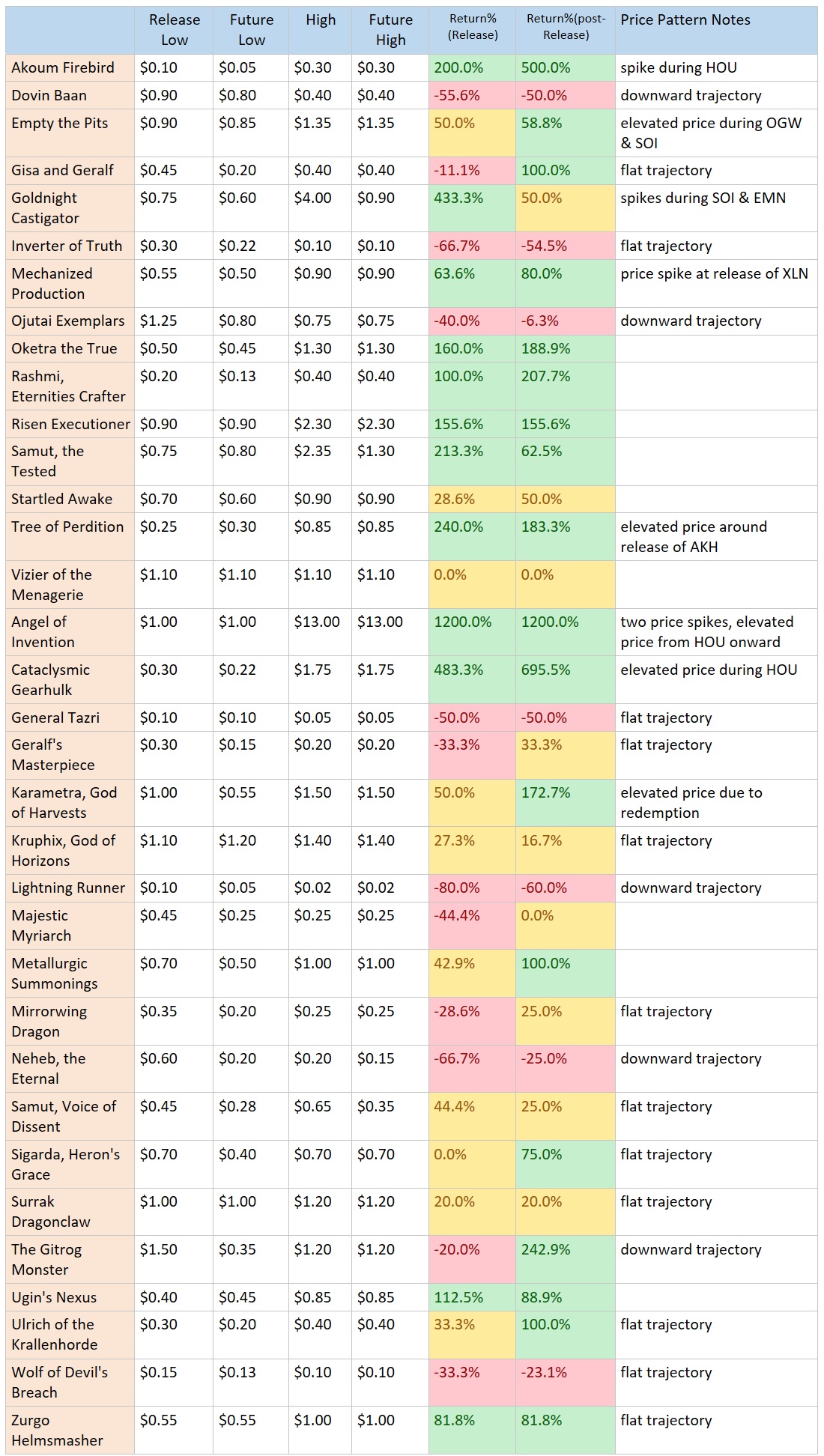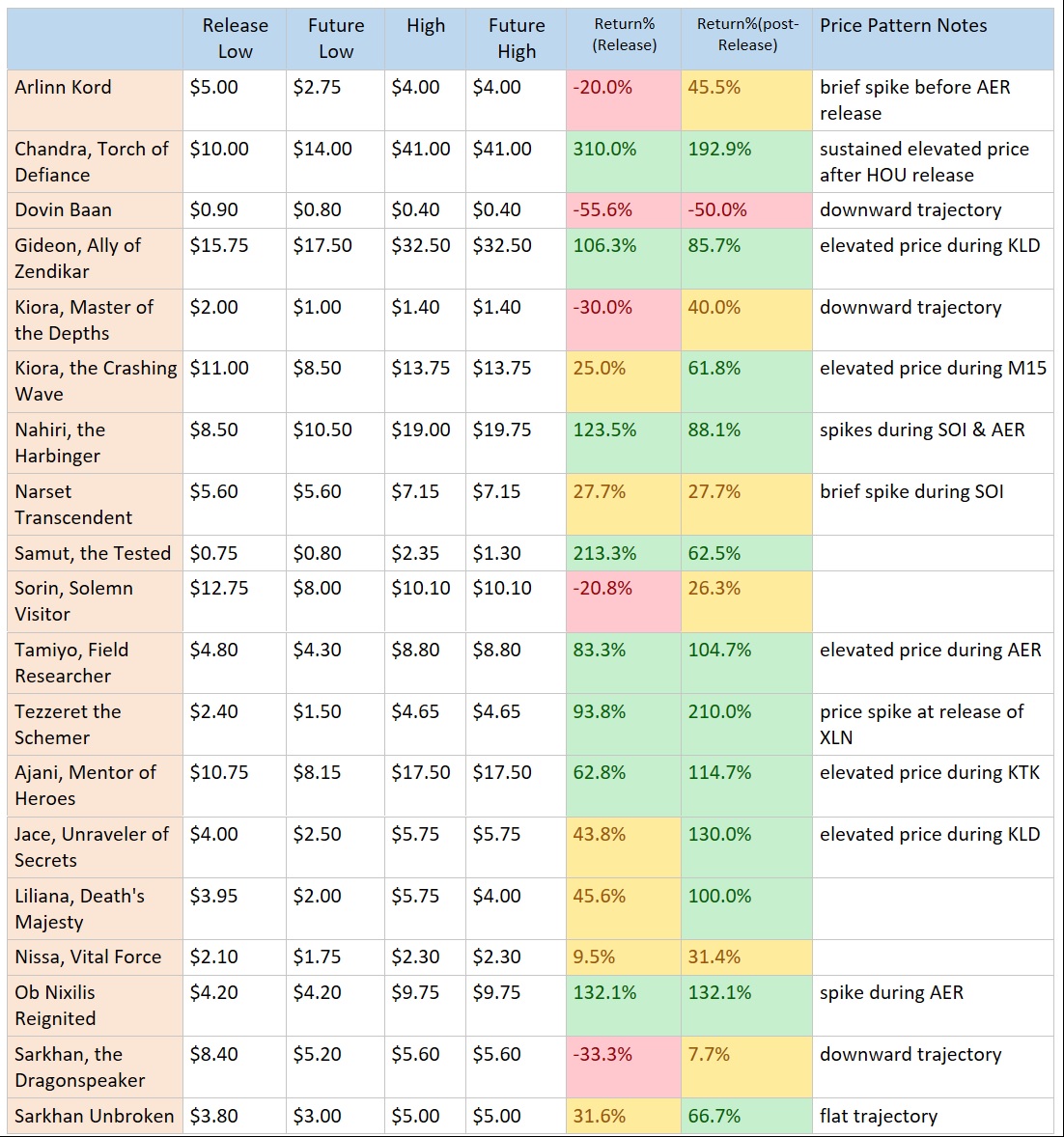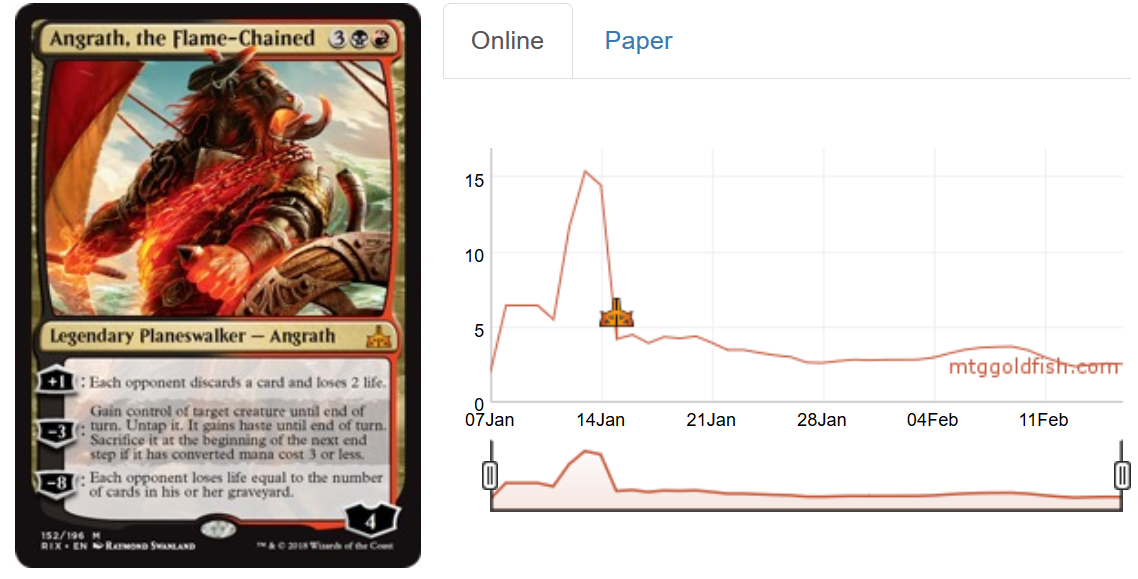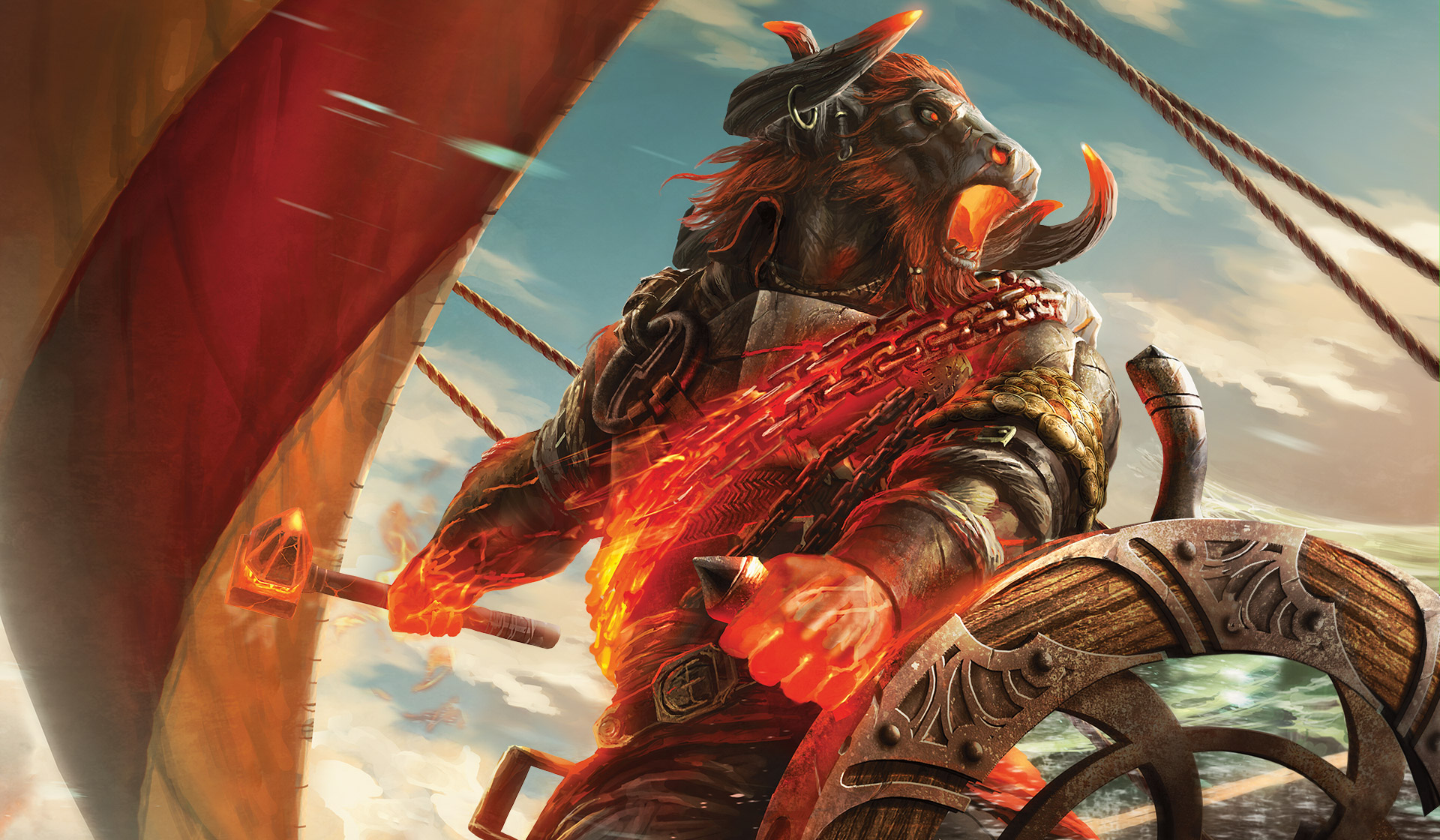Are you a Quiet Speculation member?
If not, now is a perfect time to join up! Our powerful tools, breaking-news analysis, and exclusive Discord channel will make sure you stay up to date and ahead of the curve.
Welcome back to my series on investing in mythic rares on MTGO. For part one of this mini-series, click here. This week we're going to conclude our discussion of four- and five-mana cost mythics (hereafter referred to as "midsize mythics"). Scroll down to the bottom if you want to look at my picks for Ixalan and Rivals of Ixalan midsize mythics.
There are three major takeaways I wanted you to get from last week's article:
1) There is virtually no difference between mythics that cost four and mythics that cost five. Both behave in roughly the same way, both have similar expected returns, and both have roughly the same prices. This means that mythics that cost four and five have functioned in largely the same way, and fulfilled largely the same roles, in Standard over the past five years.
2) Mythic rares whose post-release values stabilize north of $10 more often than not turn out to be good investments. While this is more of an absolute rule for lower converted mana cost mythics, the trend still applies here and offers a relatively safe investment strategy. Your average rate of return for the past five years would have been about 65 to 75 percent.
3) In general, sell windows for these cards are significantly smaller than for mythics with converted mana costs of one, two or three. That means that it will be generally wise to invest in fewer copies per card, especially for the less expensive cards with less Standard demand.
This week, I will offer more insights into what we can glean from this data. To view the whole data sheet, click the spoiler below. All dollar values listed are the values a frequent (but casual) MTGO user could be expected to buy and sell a reasonably high number of copies of the card in question. It's a lot of data, but we'll break it down in more manageable chunks.
I. Generally Avoid the Cheap Mythics

With mythics in this class, you really have to choose your spots carefully. The majority of these cards would have proven to be bad investments. We have to remember too that some of these cards saw bumps solely due to end-of-rotation redemption: cards like Zurgo Helmsmasher and Akoum Firebird would not have seen any such gains if printed today.
You should only invest in unproven mythics if you believe they have a real shot at seeing Standard (or Modern) play in the future. We have to remember that a mythic rare needs to achieve virtually no play in order to see a valuation below $1, especially mythic rares from small sets. Thus, when you invest in these cards, you are buying entirely on the potential of the card to see play due to a rotation or due to the introduction of new cards that work well with it in future sets.
In general, then, a smart idea is to identify cards that would make a major impact in a style of deck not currently seeing play in the present Standard.
These four cards, I believe, stand out from the rest in one significant way - each is a potent piece in a certain style of deck that is easy for all of us to identify. It is probably no accident that three of these would have made for good investments, and two for incredible investments. Angel of Invention is simply a powerful token maker and token lord. Risen Executioner cares about Zombie tribal. Goldnight Castigator is a unique evasive thread for Red Deck Wins. The easier it is for you to envision that a certain card could anchor a certain deck archetype, the more likely it is that that card could rise from the ashes of the bulk bins.
One bad habit I've had in the past is investing in the generically powerful cards that aren't seeing play in the hopes that they will see play in the future. Some examples include:
These cards just aren't worth your time because they are simply incapable of seeing the sort of astronomical gains that makes tracking them worth it. Value cards that might see play as a one of or two of just won't rise beyond $1.00-$2.00., and usually will just remain flat and sit in your collection accumulating virtual dust. With bulk bin mythics, you need to ask yourself whether a card can become part of the core fabric of Standard. Think big, or go home.
(II) Should I invest in Planeswalkers?

The data for midsize mythics of card is very noisy, but there is one type of card I noticed that kept having positive returns - the Planeswalkers. If invested in three to six months after release, these planeswalkers almost always see a positive return (poor Dovin Baan!), and 67 percent of them would have been successful investments (percent increases over 75 percent colored green in the chart above). The difficulty with investing in these cards is knowing the price point at which to invest. My advice is that if you believe you've identified what will become a format all-star, invest immediately. If you see a potential format role-player, wait a few months. By and large, though, these cards are safe investments. The average rate of return if invested in one to two months after release is 61 percent, and 78 percent if invested in three to six months after release.
(III) Signing Off: What about Ixalan and Rivals of Ixalan mythics?
The Ixalan Block crop of midsize mythics is fairly representative of the class at large Most seem that they are unworthy of your investment dollars, but some have potential and are likely ones I will invest in. The two that I suspect many will be interested in that I will likely avoidf are Elenda, the Dusk Rose and Twilight Prophet. I think these cards are just not quite good enough for Constructed. One can envision a deck in which Elenda would be good, but you have to put in a ton of work to make her a better option than other fours in the format.

The cards I'm most interested in in this list are Rekindling Phoenix, Angrath, the Flame-Chained, and Huatli, Radiant Champion. Angrath, in particular, is my favorite and looks like a Planeswalker card that usually spends time between $4-$5. Currently sitting at 2.58 tix, I will likely buy any copies I can find below 2.00 tix. Rekindling Phoenix caught fire too quickly for us to invest in right out of the gate, but over the coming months I think we can expect its price to dip back into the low twenties or upper teens. At that price point, so long as Lee Sharpe sets its treasure chest value at 6 and not at 12 or 20 or 24, I think I'll be a buyer. Huatli is the type of "swing for the fences" card I mentioned earlier - it has a clear home and can be quite potent in that home. I'll only buy her at bulk prices, but I likely will be an enthusiastic buyer at bulk prices.
I liked Rowdy Crew before the printing of Rekindling Phoenix. Now not even the rotation of Chandra will save it. If you have been hoarding copies of Rowdy Crew I'd look to be a seller in the coming months.
I look forward to reading your questions and comments down below. Till next time!






